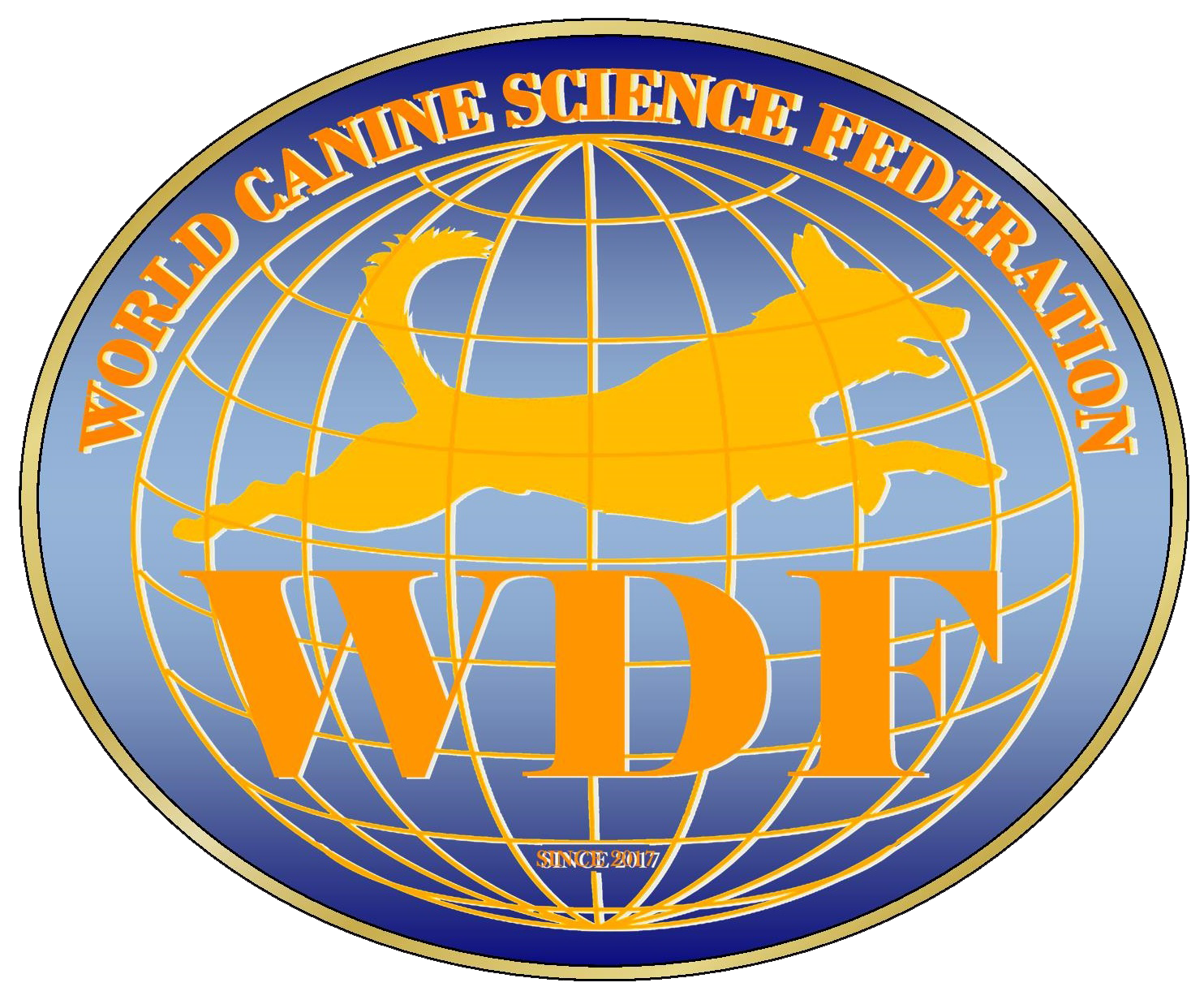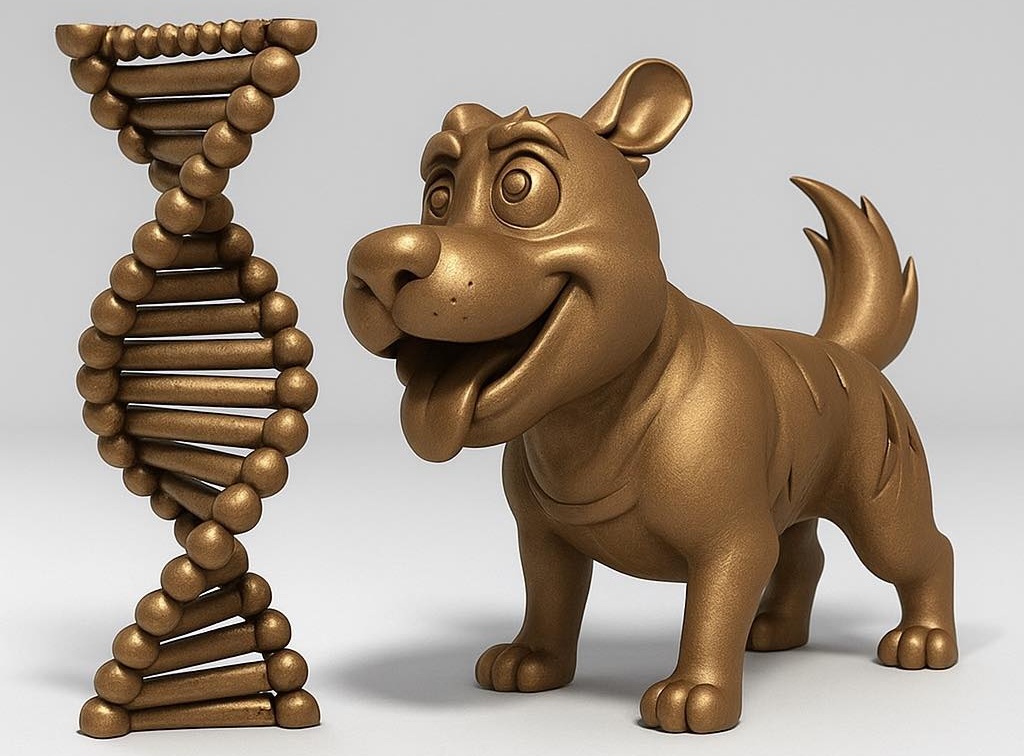➡️ Environmental Coefficients in Dog Breeding
In dog breeding, as with other animal species, it is essential to consider the fact that the same genotype can express itself phenotypically differently, as a result of the modulation produced by the environment, which exerts variable selective pressure on it.
👉 Environment or environmental coefficient (a) identifies the multiple factors that interact with all biological systems from birth to development.
Therefore, Genotype X environmental coefficient (a) = Phenotype.
That is, same genotypes, different phenotypes.
To make the concept simple and intuitive, there are several explanatory examples. (a) is represented by different variables that group very different elements under the same symbol. However, their interpretation and behavior can be a valuable contribution to breeding activities and to the observation of the subpopulations produced.
🎯 Environment refers to many aspects: nutrition, which determines the internal environment of our organism, quality of life, where emotional and psychological aspects also play a role, and obviously the external, physical environment that surrounds us in our daily lives. Climate also contributes to “shaping” the phenotype of each individual.
➡️ Let’s now try to extend the concept of environment even further to character and behavior. Intuitively, two identical twins, or better yet, clones of the same individual, with overlapping genetic profiles, raised in different conditions can produce markedly different phenotypic expressions. For example, two Friesian dairy cattle (where performance is easily measurable because they are productive), one raised in North America and the other in the wild in the Serengeti National Park, have milk production, the former even more than five times higher.
👉 Another example in the canine species, which can be useful for understanding the errors made in selection, concerns the diet of some molossoid breeds, often during the growth phase. In these breeds, a high-calorie diet with high metabolizable energy, derived from foods high in grains, is often supported to keep puppies in good shape, corresponding to the period of transfer to new owners. If the diet were supported by fresh meat, in many bloodlines, the result would be lean dogs, more difficult to sell, because they are not attractive to new owners. In this case, the “nutrition” environmental coefficient is adequate for the genetics on which it is used, but it is the genetics of those subjects that are no longer suited to that diet, having distanced themselves from the ancestral type due to the selection plans used, often due to excessive and erroneous inbreeding.
This also applies to hereditary diseases, such as hip dysplasia, elbow dysplasia, patellar dysplasia, and others, to hereditary diseases, to tumors, and to all those mutations that can arise during selection processes and that we cannot predict.
👉 Even the wolf has recognized, through domestication, the application of an environmental component exerted by man (a), which represented selective pressure on the ancestral genetics of the wolf or wild dog, selecting those subpopulations suitable for sharing the evolutionary process with humans. It is as if the environment, through human selection, has acted like a giant sieve, filtering only those genes desired for sharing between species, dog/human, promoting the desired phenotype. This ensures greater survival for those more anthropomorphized wolves, able to have easier access to urban waste.
👉 The often-proposed example, which can be traced back to the equine species, is highly evocative in representing athletic performance. In fact, in horses, the environment, first through natural evolution and then through human intervention, has intuitively enhanced genetic characteristics, progressing through selection processes with increasingly high-performance phenotypes from an athletic perspective. This must draw attention to how selection plans have been developed in this species, with strongly genetically fixed characteristics, where the genetics of breeding stock are closely studied through “mating tests,” and the use of inbreeding is decidedly limited. However, the correlation between morphology and function is highly evident.
➡️ IT IS POSSIBLE TO CALCULATE THE IMPACT OF THE ENVIRONMENT ON GENETICS
Evaluating the environmental and genetic components is important in defining the phenotypic value, through the calculation of pedigree indices (EBV). For example, in the evaluation of hip dysplasia (HD), a value is conventionally defined as between 0 and 1. Where 1 represents a complete match between genotype and phenotype, a condition so unlikely that it is not considered, it represents approximately 5%, identifying the environmental component. All other values approaching 0 represent the level of improvement or worsening within the population, compared to the average, which identifies the disease (HD) corrected through the genetic component. In radiographic assessment, this disease is often classified using radiographs that represent exclusively the phenotypic value of the tested subject.
🎯 This underscores how, in the canine species, the environment can be, even summarily, assessed in the study of subpopulations, evaluating their genetic variability, a more extensive expression of the variance curve. This allows for the statistical extension that yields significant numbers, almost always impossible in the canine species, and which allows us to identify, with greater reliability, the so-called “star performers,” especially in working dogs, and to increase the incidence of aptitude characteristics in these breeds.
☑️ The breeder/dog lover now faces the challenge of not losing the patiently established traits. This problem can be controlled through the application of “mating” strategies, which increase the percentage of blood from the ancestor whose gene pool is desired, while simultaneously reducing the inbreeding coefficients (COI). This results in a slight but constant increase in genetic variability, upon which environmental factors can exert greater dynamic selective pressure on morphological and aptitude performance, allowing for a continuation of successful canine selection.
✅ For this reason, the frequent and repeated use of titled subjects weakens these processes, resulting in a decrease in genetic variability and a consequent inhibition of the interpretation of environmental factors, as well as a regression in the breed’s development.
✔️ The organizations protecting and promoting these breeds, through so-called specialized breed societies, should encourage and sponsor the creation of dedicated databases to enable breeders to develop appropriate selection plans. This is a requirement that is largely ignored in Italy.
Author:
Francesco Micoli

